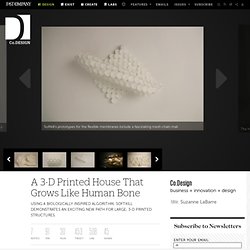

Do What You Love For Good. Libraries for the 21st Century. Woodworking. Wax-infused "nanoyarn" used to create artificial muscles. An international team of scientists based at the University of Texas, Dallas (UTD), has developed a new type of artificial muscle created from carbon “nanotubes” – tiny hollow cylinders constructed from the same graphite layers found in the core of a standard pencil.

Despite measuring 10,000 times less than the diameter of a human hair, the new muscles can lift more than 100,000 times their own weight, which amounts to approximately 85 times the power of a natural muscle of equivalent size. The new muscles are manufactured by taking a twisted yarn of the miniscule carbon cylinders, then introducing a volume-changing “guest,” in this case the paraffin wax used in candles. The wax-coated yarn is then heated either electrically, or with a flash of light, and this causes the wax to expand, with the yarn volume increasing, and the length of the material contracting as a result.
This muscle contraction, or actuation, can occur in just 25 thousandths of a second. Dr. Source: UTD. A 3-D Printed House That Grows Like Human Bone. Though scientists like USC’s Behrokh Khoshnevis and Enrico Dini are edging ever closer to developing a 3-D printer large enough to print houses, the technology is still a long way from being widely implementable.

That hasn’t stopped architects from designing for it, though--after all, plenty of great architecture is unbuildable. A London design studio called Softkill is leading the way, painting a far-out picture of what 3-D printed architecture could eventually look like. At last week’s 3D Printshow, the team of Architectural Association grads presented a concept called ProtoHome, which imagines a radical new mode of construction based on the strengths of 3-D printing. Their design is in stark contrast to other 3-D printed home schemes, which are either markedly utilitarian or oddly traditional. The spindly, web-like structure is based on an algorithm that mimics the way bones grow in human bodies. [via Dezeen]
Stone Spray builds architecture from the ground up ... literally. The Stone Spray works much like a 3D printer, since it follows a 3D design from a computer and creates objects by layering material Image Gallery (9 images) As useful as 3D printers are becoming in industrial design, they still aren't exactly eco-friendly and are still mostly limited to small scale objects.

You couldn't really use one to print a building just yet, but a group of architects may have taken a step in the right direction with a new machine called the Stone Spray. Using natural soil and sand, the Stone Spray can construct intricate solid structures at almost any location, even on vertical surfaces. View all The device was developed by architects Petr Novikov, Inder Shergill, and Anna Kulik as a research project to experiment with applying the concepts of digital manufacturing to construction work. Aside from the material it uses, the Stone Spray also stands out for its ability to create forms that most other 3D printers cannot. Source: Stone Spray. WikiHouse / Open Source Construction Set. Prototype of the Day: A Printer That Can Build a House in 20 Hours - Technology. The machine takeover continues, and the next humans to lose their jobs may well be construction workers.

Behrokh Khoshnevis, a professor of Industrial and Systems Engineering at the University of Southern California, has spent the last 15 years working on a machine that will "print" buildings. He's still working on it, but in the TedTalk video below, you can see the prototype at work. Various nozzles and robots slide around on a giant grid of mobile bars and rails, mixing cement, laying electrical wire, and installing rebar.
He calls the practice Contour Crafting. The technology, he says, will be faster than all conventional building methods, including prefab construction. Professor Khoshnevis thinks the technique could revolutionize construction wherever quick housing is needed. Wax Walls Keep The Temperature In Your Home Comfortable, Without Using Extra Energy. We may look back in wonder at the myopia of our times.

Energy efficiency technologies are often expensive and untested compared to today’s cheap (heavily subsidized) and proven solutions. A strong economic case can be built for sticking with today’s lowest cost materials and technologies if we accept a social discount rate (the percentage that discounts the value of future benefits to people) that gives short shrift to the future. Governments usually peg this at about 5% or more on a good day. But science is advancing so quickly--or just applying old principles in new ways--that some conventional technologies don’t really make sense anymore.
Take walls. For decades, we have been using mined gypsum pressed between two cardboard sheets for the drywall hanging in most homes and offices. It works because phase change materials store and release large amounts of energy as they transition from one physical state to another--usually solid to liquid and back again.